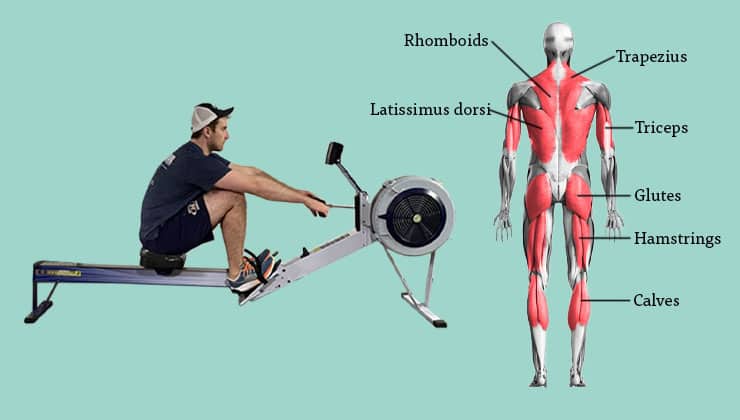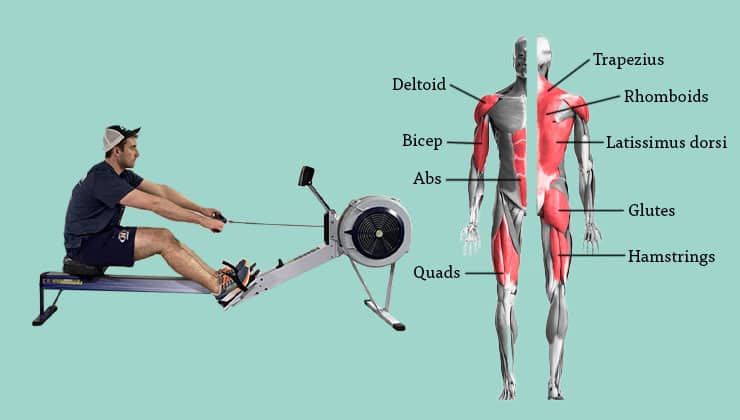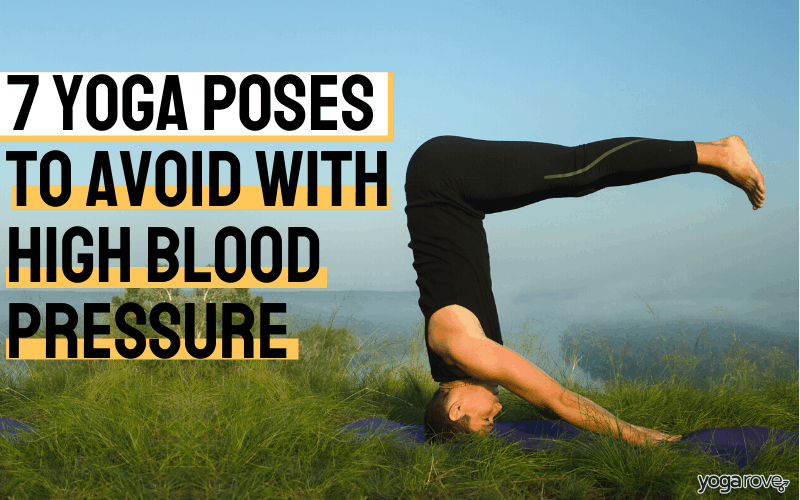What Muscles Does a Rowing Machine Workout: A rowing machine primarily works the muscles in your legs, back, and arms. It also engages your core for stability.
Rowing machines offer a comprehensive workout that targets multiple muscle groups. This exercise is effective for strengthening the legs, back, arms, and core. Each stroke requires coordinated effort, making it a full-body activity. Your legs do most of the work during the initial push-off, activating the quadriceps, hamstrings, and glutes.
As you pull the handle towards your torso, the back muscles, including the lats and rhomboids, engage. Your biceps and forearms also get a workout. The core remains tight throughout, providing stability and balance. This all-in-one exercise makes rowing machines an excellent choice for overall fitness and muscle toning.
Introduction To Rowing Machines
Rowing machines are popular for full-body workouts. They simulate the action of rowing a boat. Users love them for their efficiency and effectiveness. With just one machine, you can target multiple muscles.
The Rise Of Rowing Machines In Fitness
Rowing machines have gained popularity in fitness centers. People enjoy their low-impact nature. This makes them suitable for all ages. They offer a balanced workout for both strength and cardio.
Many gyms now feature rowing machines. They are often used in group classes. Their popularity continues to grow. This is because of their versatility and benefits.
Benefits Of Using A Rowing Machine
Using a rowing machine has many benefits. Here are some key advantages:
- Full-Body Workout: It targets your legs, core, and arms.
- Low Impact: It’s gentle on the joints.
- Cardio and Strength: Combines both in one session.
- Calorie Burn: Helps in weight loss.
- Improves Posture: Strengthens your back and core muscles.
Rowing machines also improve endurance. They challenge your cardiovascular system. This makes your heart and lungs stronger. Regular use can lead to better overall fitness.

Credit: bainbridgerowing.org
Anatomy Of A Rowing Stroke
The Anatomy of a Rowing Stroke reveals how a rowing machine targets multiple muscles. Understanding these details helps maximize your workout efficiency.
Phases Of The Rowing Stroke
A rowing stroke has four key phases:
- Catch: The starting position. Knees bent, shins vertical, arms extended.
- Drive: Push with legs, engage the core, pull with arms.
- Finish: Legs straight, lean back slightly, handle pulled to chest.
- Recovery: Extend arms, bend knees, slide forward to catch position.
Coordination Of Muscle Groups
The rowing stroke involves coordinated efforts from multiple muscle groups:
| Phase | Primary Muscles Engaged |
|---|---|
| Catch | Hamstrings, calves, biceps |
| Drive | Quadriceps, glutes, core, back |
| Finish | Upper back, shoulders, triceps |
| Recovery | Core, calves, hamstrings |
During the catch phase, the hamstrings and biceps are engaged. The drive phase activates the quadriceps, glutes, and core. The finish phase focuses on the upper back and shoulders. Lastly, the recovery phase uses the core and hamstrings.
By understanding these muscle engagements, your rowing workouts become more efficient and targeted.
Primary Muscles Targeted
Using a rowing machine provides a full-body workout. This exercise targets several primary muscles. These muscles include the legs, core, and upper body. Let’s dive into each muscle group.
Engaging The Leg Muscles
Rowing starts with a strong leg push. This action engages the quadriceps, hamstrings, and calves. These muscles work hard to propel your body backward.
| Leg Muscle | Function |
|---|---|
| Quadriceps | Straighten the knee |
| Hamstrings | Bend the knee |
| Calves | Stabilize the ankle |
Core Muscles Activation
The core muscles stabilize your body during rowing. These muscles include the abs, obliques, and lower back. A strong core ensures good posture and efficient energy transfer.
- Abs: Help maintain a straight back.
- Obliques: Assist in twisting motions.
- Lower Back: Supports the spine and prevents injury.
Upper Body Musculature
Rowing also targets the upper body. This includes the back, shoulders, and arms. Pulling the handle works the lats, traps, and biceps.
- Lats: Help pull the arms back.
- Traps: Stabilize the shoulders.
- Biceps: Flex the elbows.
Rowing is a comprehensive workout. It engages multiple muscle groups. Regular use of a rowing machine can improve strength and endurance.
Secondary Muscles Worked
Rowing machines are excellent for a full-body workout. They target primary muscles like the back, legs, and arms. But they also engage secondary muscles that enhance overall strength and stability. Understanding these secondary muscles helps you maximize the benefits of your rowing workouts.
Supporting Muscle Groups
Rowing machines engage various supporting muscle groups. These muscles assist the primary muscles, providing more power and endurance.
- Triceps: These muscles help in the pulling motion.
- Biceps: They support the rowing stroke.
- Forearms: Strong forearms ensure a firm grip on the handle.
- Upper Back: Muscles like the trapezius and rhomboids stabilize the shoulders.
Role Of Stabilizer Muscles
The stabilizer muscles play a crucial role in maintaining balance. They ensure you stay steady during the rowing motion.
- Core Muscles: These include the abs and obliques. They help maintain a strong posture.
- Lower Back: It supports the spine and prevents injuries.
- Hip Flexors: These muscles stabilize your hips during each stroke.
- Glutes: They provide power and stabilize the lower body.
Understanding the role of these secondary muscles can enhance your rowing experience. Focus on these muscles to improve your performance and prevent injuries.
Rowing Machine Settings For Muscle Engagement
Using a rowing machine can give you a full-body workout. The right settings will help target your muscles better. This guide will show you how to adjust settings for muscle engagement.
Adjusting Resistance
Resistance settings are important. They change how hard you need to pull. Higher resistance works your muscles more. Lower resistance focuses on cardio. <ul
- Start with low resistance if you’re a beginner.
- Gradually increase resistance as you get stronger.
- Use higher resistance for strength training.
- Lower resistance is good for endurance and cardio.
Proper Form And Technique
Good form is key to working your muscles right. Poor form can cause injuries. <ol
- Sit with a straight back.
- Use your legs to push first.
- Pull the handle to your chest.
- Keep your elbows close to your body.
- Return to start in a controlled manner.
Remember to breathe steadily. This helps you stay relaxed and keeps your muscles working efficiently.
Workout Variations On A Rowing Machine
What Muscles Does a Rowing machine offer diverse workout. These variations target different muscle groups. This ensures a comprehensive fitness routine.
High-intensity Interval Training (hiit) On A Rower
HIIT workouts on a rowing machine are intense and effective. They alternate between short bursts of maximum effort and rest. This boosts cardiovascular health and burns calories rapidly.
- Warm-Up: 5 minutes of moderate rowing
- Intervals: 30 seconds of intense rowing, 30 seconds of rest
- Repeat: 10-15 cycles
- Cool Down: 5 minutes of light rowing
Endurance Workouts
Endurance workouts build stamina and engage multiple muscle groups. They involve steady, prolonged rowing sessions. This helps improve heart health and muscle endurance.
- Warm-Up: 10 minutes of light rowing
- Main Set: 30-60 minutes of steady rowing at moderate pace
- Cool Down: 5-10 minutes of slow rowing
Strength Training Sessions
Strength training on a rower focuses on muscle building. This involves rowing with added resistance.
| Exercise | Duration | Resistance Level |
|---|---|---|
| Warm-Up | 5 minutes | Low |
| Power Strokes | 20 strokes | High |
| Rest | 1 minute | Low |
| Repeat | 8-10 sets | High |
| Cool Down | 5 minutes | Low |
Injury Prevention And Safety Tips
Rowing machines offer a full-body workout. They improve both strength and endurance. To get the best results, it is important to stay safe. This section covers common rowing injuries and how to prevent them.
Common Rowing Injuries
Some injuries occur more often with rowing machines. These include:
- Lower back pain
- Shoulder strain
- Knee pain
- Wrist soreness
Understanding these injuries can help you avoid them. Proper form and technique are crucial.
Warm-up And Cool-down Routines
What Muscles Does a Rowing Machine Workout? Warming up prepares your body for exercise. Cooling down helps your body recover. Both are essential for injury prevention.
Warm-up Routine:
- Start with 5-10 minutes of light cardio.
- Perform dynamic stretches, focusing on your arms and legs.
- Do some gentle rowing at a low resistance.
Cool-down Routine:
- Row at a slow pace for 5 minutes.
- Do static stretches for your major muscle groups.
- Focus on breathing deeply and relaxing your muscles.
Here is a table summarizing the recommended warm-up and cool-down activities:
| Activity | Duration |
|---|---|
| Light Cardio | 5-10 minutes |
| Dynamic Stretches | 5 minutes |
| Gentle Rowing | 5 minutes |
| Slow Rowing | 5 minutes |
| Static Stretches | 5 minutes |
Advanced Rowing Machine Workouts
What Muscles Does a Rowing Machine Workout? Advanced rowing machine workouts target multiple muscle groups. They build strength, endurance, and cardiovascular health. These workouts are perfect for those seeking a challenge.
Incorporating Sprints
Incorporating sprints into your rowing routine boosts muscle power. Short bursts of high-intensity rowing activate fast-twitch muscle fibers. This type of workout primarily targets your quads, glutes, and hamstrings.
Here’s a simple sprint workout plan:
- Start with a 5-minute warm-up at a moderate pace.
- Row at maximum effort for 30 seconds.
- Recover with light rowing for 90 seconds.
- Repeat the sprint and recovery cycle 8 times.
- Finish with a 5-minute cool-down.
Pyramid Training Sessions
Pyramid training sessions are great for muscle endurance. They involve gradually increasing then decreasing the rowing intensity. This workout challenges your core, back, and arms.
Here’s a pyramid training session structure:
- Warm up for 5 minutes at an easy pace.
- Row for 1 minute at a high intensity.
- Row for 2 minutes at a higher intensity.
- Row for 3 minutes at an even higher intensity.
- Reverse the order, rowing for 2 minutes, then 1 minute.
- Cool down for 5 minutes.
Tabata Rowing Workouts
Tabata workouts are a form of high-intensity interval training (HIIT). They are effective for building muscle and burning fat. This workout specifically enhances your cardiovascular system and muscular endurance.
Here’s a Tabata rowing workout plan:
| Interval | Duration |
|---|---|
| High-intensity rowing | 20 seconds |
| Rest | 10 seconds |
| Repeat | 8 times |
Always finish with a 5-minute cool-down to relax muscles.
Tracking Progress And Setting Goals
Tracking your progress and setting goals are crucial for maximizing your rowing machine workouts. Knowing how your fitness improves keeps you motivated. Setting achievable targets helps you stay focused and committed to your fitness journey.
Measuring Fitness Improvements
Regularly measuring your fitness improvements is essential. Use a combination of tools and metrics to get a clear picture of your progress. Here are some effective ways to measure your fitness improvements:
- Distance Rowed: Track the total distance rowed each session.
- Time: Measure the time it takes to row a specific distance.
- Stroke Rate: Monitor the number of strokes per minute.
- Calories Burned: Use the rowing machine’s display to see calories burned.
- Heart Rate: Check your heart rate to assess cardiovascular fitness.
Creating a fitness log or using apps can help you keep track of these metrics. Regularly reviewing this data will show you how much you’ve improved.
Setting Achievable Targets
Setting achievable targets is key to staying motivated. Start with small, specific goals that are easy to achieve. Here are some tips for setting effective targets:
- Be Specific: Define clear and specific goals like “Row 5,000 meters in 30 minutes.”
- Make It Measurable: Ensure you can track your progress with numbers.
- Set Realistic Goals: Choose goals that challenge you but are attainable.
- Time-Bound: Set a deadline to achieve your goals.
For example, you might set a goal to increase your rowing distance by 10% every month. This provides a clear target and keeps you focused.
| Metric | Initial Value | Target Value | Time Frame |
|---|---|---|---|
| Distance Rowed | 3,000 meters | 3,300 meters | 1 month |
| Time to Row 5,000 meters | 25 minutes | 23 minutes | 2 months |
| Stroke Rate | 20 strokes/min | 22 strokes/min | 1 month |
Review your goals regularly and adjust them as needed. This keeps your fitness journey exciting and rewarding.

Credit: www.strengthlog.com
Complementary Exercises For Rowers
Rowing machines offer a full-body workout. They target several muscle groups. To enhance performance, rowers should incorporate complementary exercises. These exercises improve strength, flexibility, and mobility.
Strength Training For Rowers
What Muscles Does a Rowing Machine Workout? Strength training helps build muscle and improve endurance. Rowers should focus on exercises that enhance rowing performance. Key exercises include:
- Deadlifts: Strengthen the back, glutes, and hamstrings.
- Squats: Target the quads, hamstrings, and glutes.
- Bench Press: Builds upper body strength.
- Pull-Ups: Enhance back and shoulder muscles.
These exercises boost overall power. They also help in maintaining balance and stability during rowing.
Flexibility And Mobility Work
Flexibility and mobility are crucial for rowers. They prevent injuries and improve performance. Here are some effective exercises:
- Dynamic Stretching: Warms up muscles before rowing.
- Foam Rolling: Reduces muscle tightness.
- Yoga: Enhances overall flexibility.
- Hip Flexor Stretches: Improves hip mobility.
Incorporating these exercises aids in muscle recovery. It also enhances the range of motion, making rowing more efficient.
Nutrition For Rowing Machine Training
Rowing machine workouts are intense and require proper nutrition. Fuel your body correctly for peak performance and recovery. This section covers key aspects of nutrition tailored for rowing machine training.
Fueling For Performance
What Muscles Does a Rowing Machine Workout? Before a rowing session, consume a balanced meal. Include complex carbohydrates, lean proteins, and healthy fats. Carbohydrates provide the energy needed for intense workouts. Proteins help build and repair muscles. Healthy fats support overall body function.
Here are some meal ideas:
- Oatmeal with berries and nuts
- Chicken breast with brown rice and vegetables
- Whole grain toast with avocado and eggs
Stay hydrated. Drink water throughout the day. Consider a sports drink if your workout is longer than an hour. Hydration ensures your muscles function properly.
Recovery Nutrition
Post-workout nutrition is crucial for muscle recovery. Consume a meal within 30 minutes after rowing. This helps replenish glycogen stores and repair muscle tissue.
Focus on meals that include:
- Proteins to repair muscles (chicken, fish, tofu)
- Carbohydrates to replenish energy (sweet potatoes, quinoa)
- Healthy fats to reduce inflammation (avocado, olive oil)
Here are some recovery meal ideas:
- Grilled salmon with quinoa and steamed broccoli
- Greek yogurt with honey and mixed nuts
- Protein smoothie with banana and spinach
Proper nutrition supports your rowing machine workout. Eat well and stay hydrated for optimal performance and recovery.

Credit: honehealth.com
Faqs About Rowing Machine Workouts
Rowing machines are popular for their full-body workouts. They target multiple muscle groups and improve overall fitness. Here are common questions people ask about rowing machine workouts.
Choosing The Right Rowing Machine
What Muscles Does a Rowing Machine Workout? Choosing the right rowing machine depends on your needs. Consider the types of rowing machines available:
- Air Rowers: These use air resistance and provide a smooth row.
- Magnetic Rowers: These are quieter and have adjustable resistance.
- Water Rowers: These mimic the feel of rowing on water.
- Hydraulic Rowers: These are compact and affordable.
Each type has its own benefits. Choose one that fits your space, budget, and workout goals.
How Often To Row For Results
Consistency is key to seeing results. Here are some guidelines:
- Beginner: 2-3 times per week for 20 minutes.
- Intermediate: 3-4 times per week for 30 minutes.
- Advanced: 4-5 times per week for 45 minutes or more.
Listen to your body and adjust your routine as needed. Overtraining can lead to injury.
Frequently Asked Questions
Is 20 Minutes Of Rowing Enough?
Yes, 20 minutes of rowing can be enough. It provides a full-body workout, boosts cardiovascular health, and burns calories efficiently.
What Muscles Does a Rowing Machine Workout Burn Belly Fat?
Yes, rowing machines help burn belly fat. They provide a full-body workout that boosts calorie burn and promotes fat loss. Consistent use, combined with a healthy diet, can reduce belly fat effectively.
Can You Get In Shape By Just Rowing?
Yes, you can get in shape by just rowing. It’s a full-body workout that improves strength, endurance, and cardiovascular health.
Can You Build Muscle With A Rowing Machine?
Yes, you can build muscle with a rowing machine. It works your legs, back, arms, and core. Rowing provides a full-body workout, enhancing muscle strength and endurance. Consistent use, combined with proper diet, promotes muscle growth and overall fitness.
Conclusion
A rowing machine offers a comprehensive workout. It engages major muscle groups, including legs, core, back, and arms. Incorporating rowing into your routine enhances strength, endurance, and cardiovascular health. Whether you’re a beginner or a seasoned athlete, this versatile machine benefits overall fitness.
Start rowing to transform your physical health today.




Leave a Reply